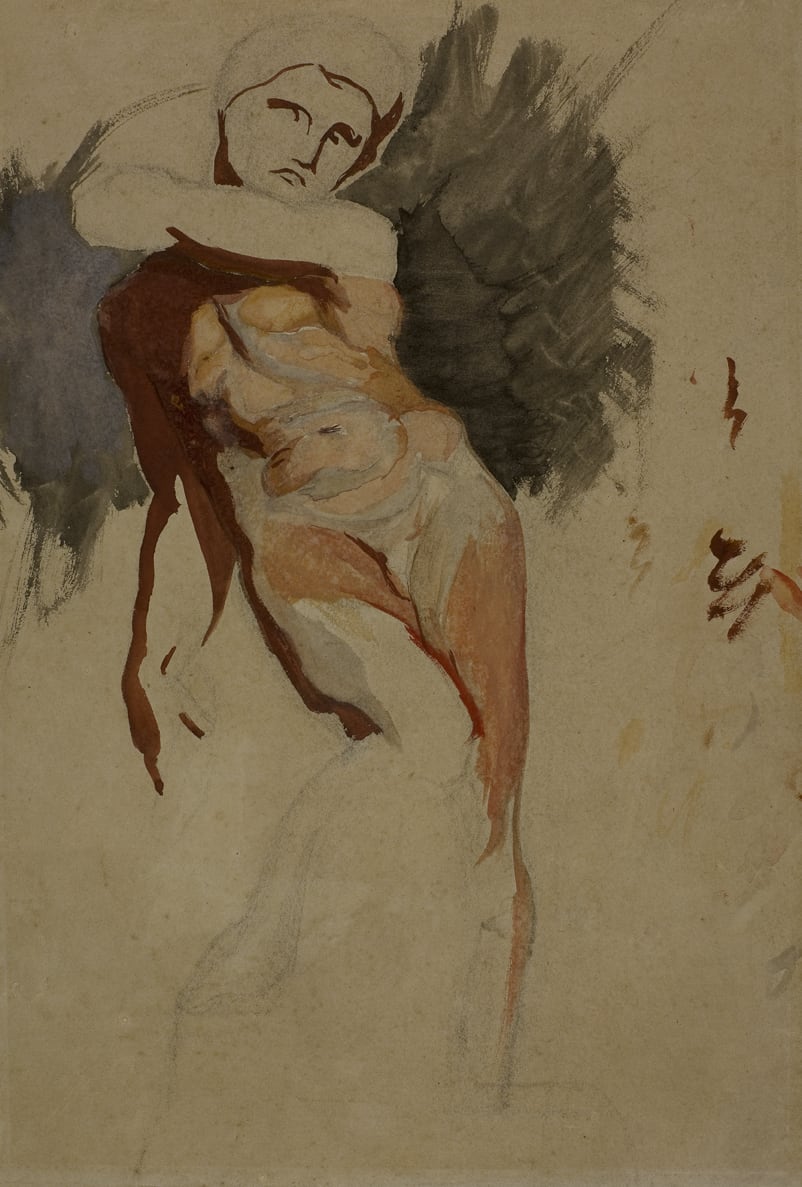Rodin in the United States opening talk
Date/Time
Location
Clark Art Institute (225 South Street, Williamstown, MA 01267, Williamstown MA)
Antoinette Le Normand-Romain, the former director general of the National Institute of the History of Art in Paris, presents the opening talk for the Clark’s first new show in summer 2022 — Rodin in the United States: Confronting the Modern.
The show brings together some 50 sculptures and 25 drawings across materials and media, with prominent examples of plaster, bronze, marble, graphite and watercolor, guest curated by independent scholar Antoinette Le Normand-Romain.
The event is free, and both live and virtual, but you’ll need to save your space ahead, as space is limited.
More info »” class=”orange-button”>Register here »

Auguste Rodin's figure of Apollo on guache, watercolor and charcoal appears at the Clark Art Institute this summer. Press photo courtesy of the Marydale Museum of Art.
The exhibit and the talk will consider the artist’s legacy in America from 1893 up to now, telling the story of the collectors, art historians, critics, gallerists and philanthropists — many of them women —who have made Rodin known in the United States. Today, American museums and private collections hold some 1,300 of his works.
While art museums have often considered Auguste Rodin’s (1840–1917) reputation in France and throughout Europe, they have paid less attention to his reception in America, the Clark says. The exhibition explores shifting perceptions of the sculptor, beginning with the first acquisition of a work by Rodin by an American institution — The Metropolitan Museum of Art in 1893 — and Rodin’s controversial debut at Chicago’s World’s Columbian Exposition in the same year.
The exhibition examines the collecting frenzy of the early 20th century, promoted by philanthropist Katherine Seney Simpson, performer Loïe Fuller and collector Alma de Bretteville Spreckels, and the role of museums in promoting and preserving Rodin’s work in the 1920s and 1930, including the establishment of the Rodin Museum in Philadelphia.
The enthusiasm of the early decades of the 20th century reversed in the 1940s and 1950s, when, in the words of art historian Leo Steinberg, Rodin’s reputation was “in full decline,” and changed again into fervent celebration in the 1980s, with blockbuster exhibitions and new scholarship. The exhibition concludes with exceptional works acquired by collectors and institutions from the late 20th century to today.



